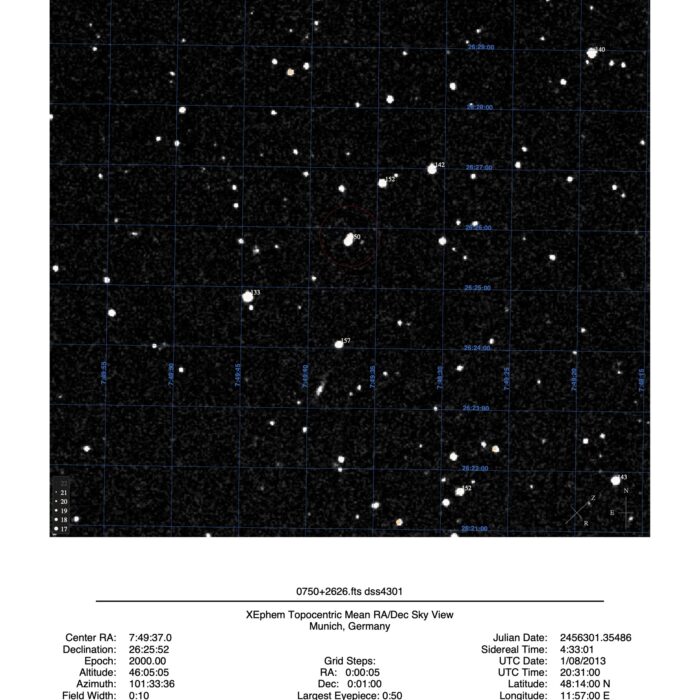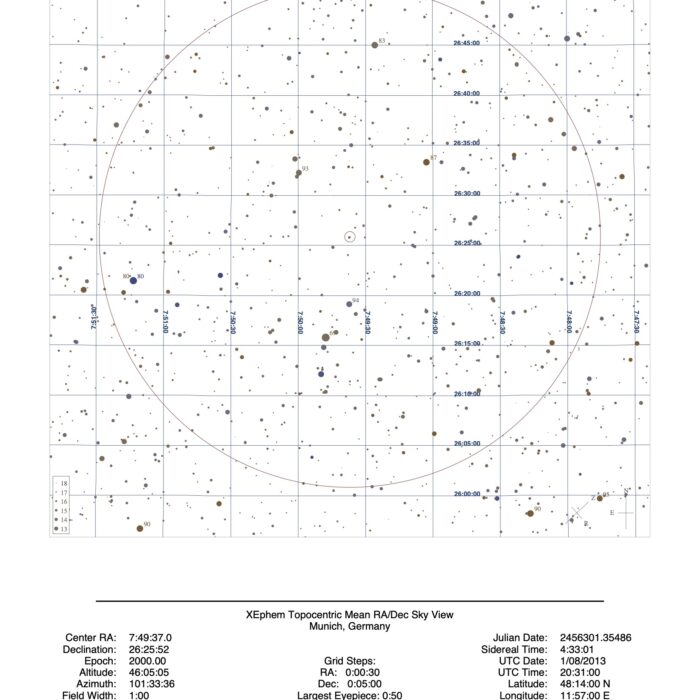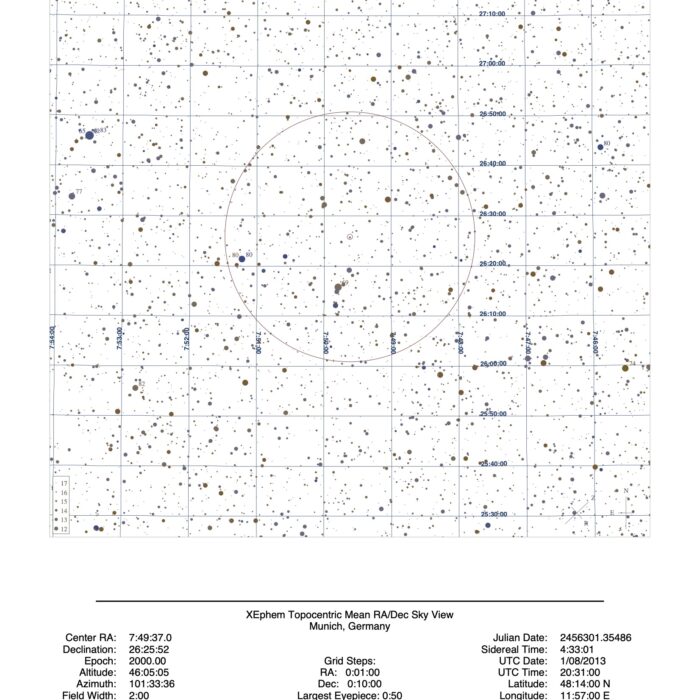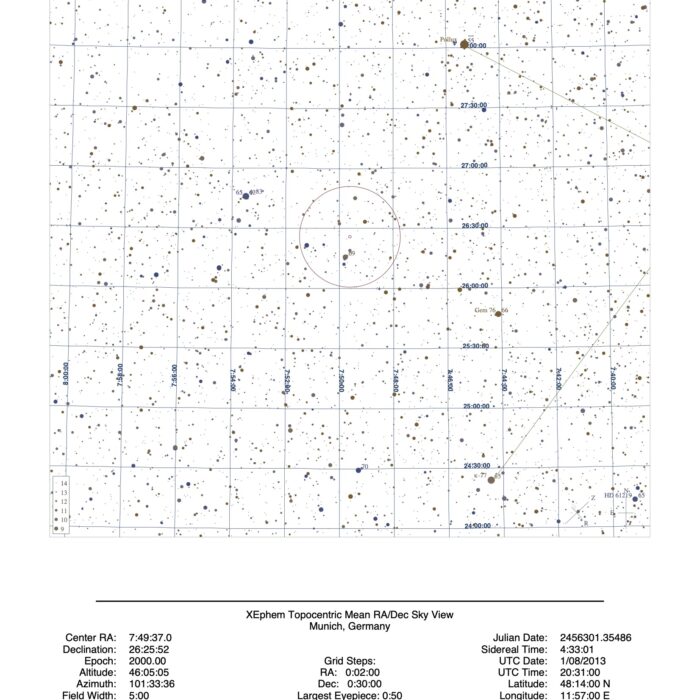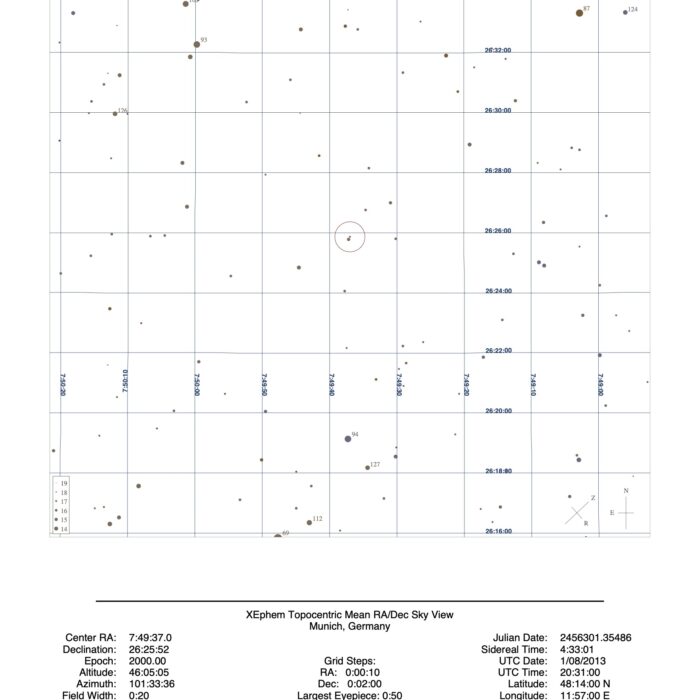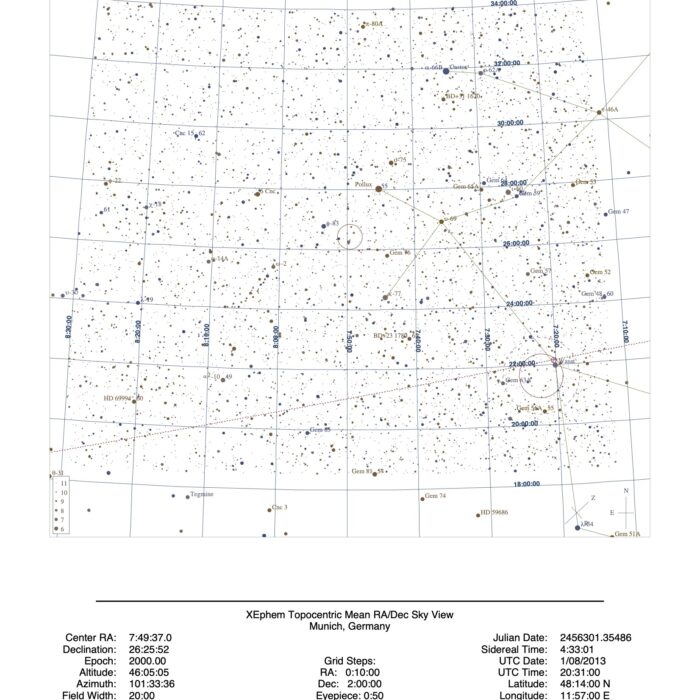A potential occultation by the transneptunian object Varuna on January 8th, 2013, appeared favorable to be detected from many countries using relatively small telescopes. THIS IS NO LONGER CORRECT. SEE THE LATEST UPDATE BELOW.
The latest prediction that we obtained just 3 days before the occultation is NO LONGER FAVORABLE for populated countries in the world. Japan is the only country with chances to detect the event.
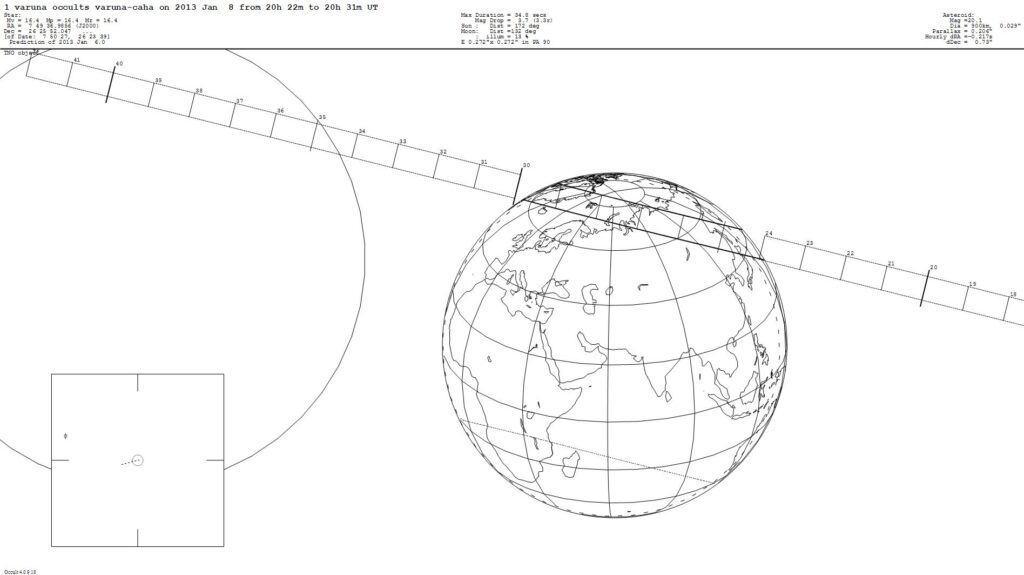
Astrometric update made in december (old stuff):
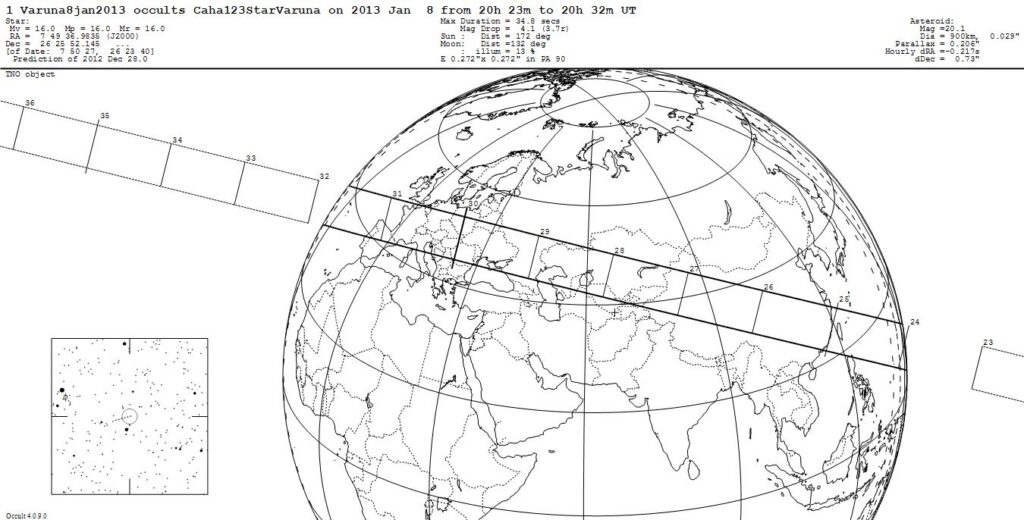
In this map you can see the path that the stellar shadow of Varuna will have on Earth. In other words, the path indicates the areas of the world where the star should dissappear from telescopic view for up to a minute. This prediction was made by using images from the Calar Alto 1.2m telescope. The diameter used for this prediction is just a guess, so the width of the shadow path can be quite different. Besides, the shadow path can move North or South on Earth considerably, by at least the shadow width!.
The start to be occulted (3UCAC 103384721) is 16.4 mag in V, and it is even brighter in R. There is a brighter star very close to it (3UCAC 103383421 ), approximately 6 arcseconds away from the target star. It is of 14.9 mag.
Finding charts kindly provided by W. Beisker are below:
The coordinates of the star to be occulted are (J2000)
RA=07h 49m 36.9s DEC= +26º 25′ 52″
To observe the event, a telescope of at least 25cm in diameter is needed, equipped with a CCD camera. A region of interest of the CCD chip should be used to speed up the readout and download time. This time is what we call «deadtime». The integration time used should be at least a factor of 5 to a factor of 10 larger than the deadtime. Otherwise the chances to miss the ingress or egress are too high. The region of interest should be as small as possible but keeping at least one or two reference stars, and also large enough so that tracking errors or tracking drift of the telescope does not kick the star out of the field. Typically 1 arcmin is good enough. Please try to determine your deadtime before starting the observations, in order to pick the right integration time. Integration times of 5s to 10s should probably be used by most observers because most amateur CCD do not achieve deadtimes below 1s to 2s. No filters should be used. The driftscan or other similar techniques, in popular software such as winscan are not encouraged because these techniques are useful when the star to be occulted is very bright with respect to the background so the increase of the background per pixel per exposure time is not an issue. Occultations of stars by TNOs are considerably different to occultations by asteroids in which the stars to be occulted are usually very very bright. Even with relatively large integration times we can still determine the ingress and egress times with high accuracy using square-well fits.
You should start observing approximately 15 to 20 minutes before the nominal time of the event and finish around 15 to 20 minutes after the nominal time of the event. The nominal time of the event is 20:28 UT for this Varuna event.
Use software to synchronize the computer time with UTC. Dimension4 is a good software tool. We need very high accuracy timing in the headers of the images. Also, try to make sure that the time in the headers is writen with decimals in the seconds. In other words, try to avoid roundoff to 1s, used in popular CCD imaging software such as MaximDL (this can be solved by setting the shutter latency parameter).

